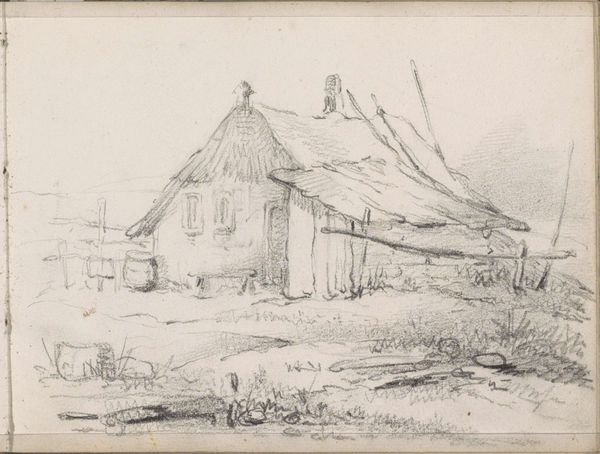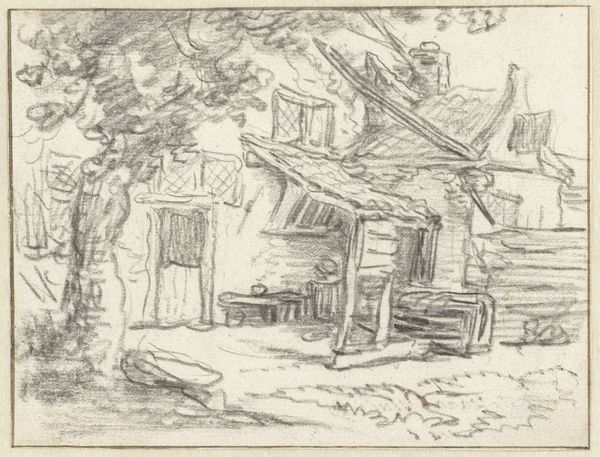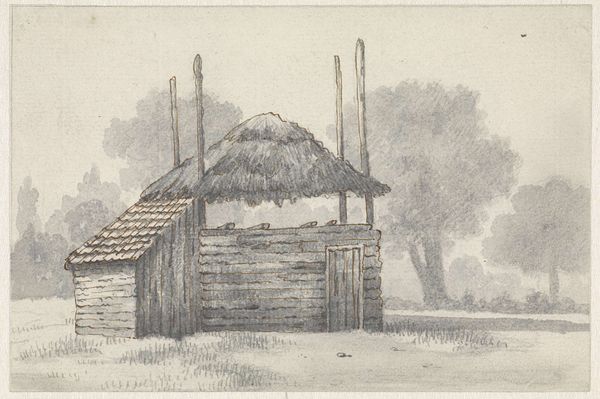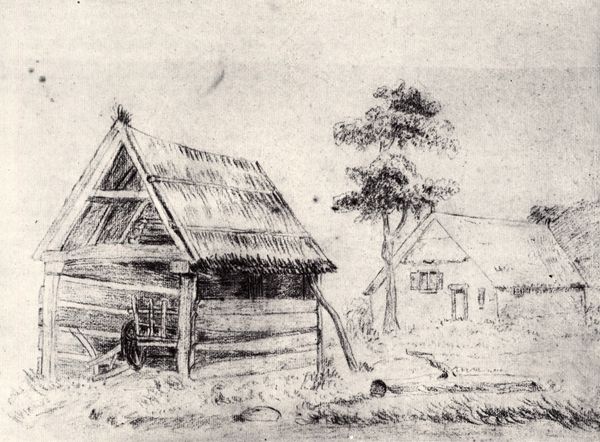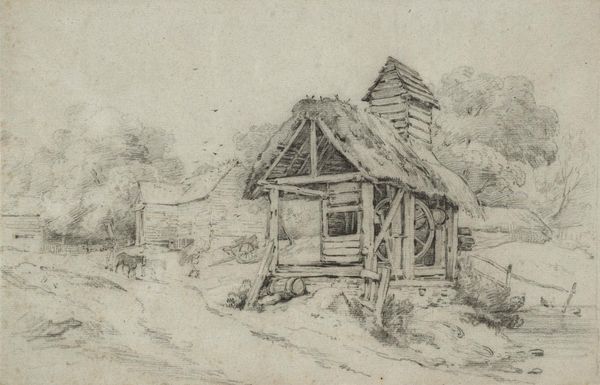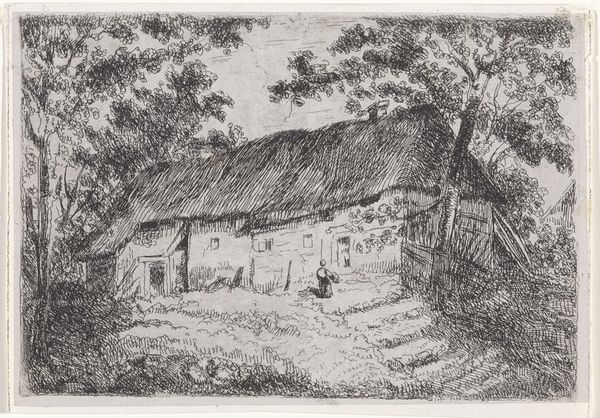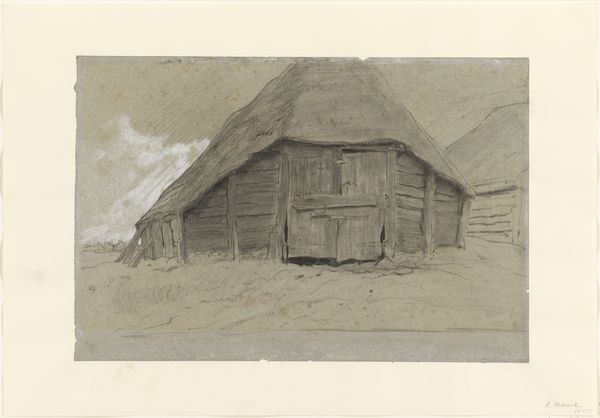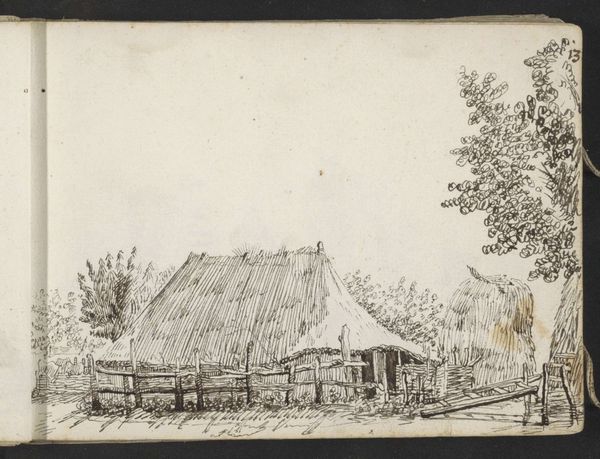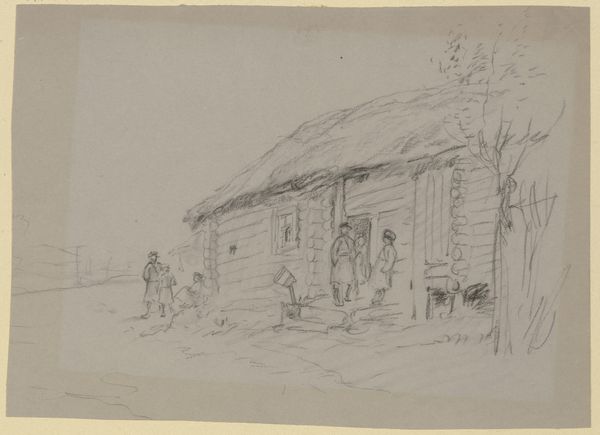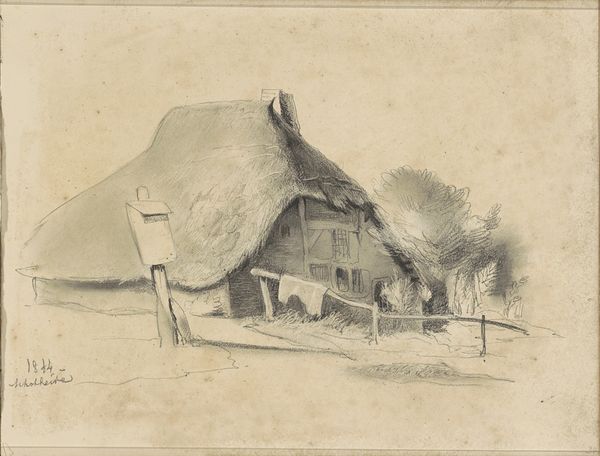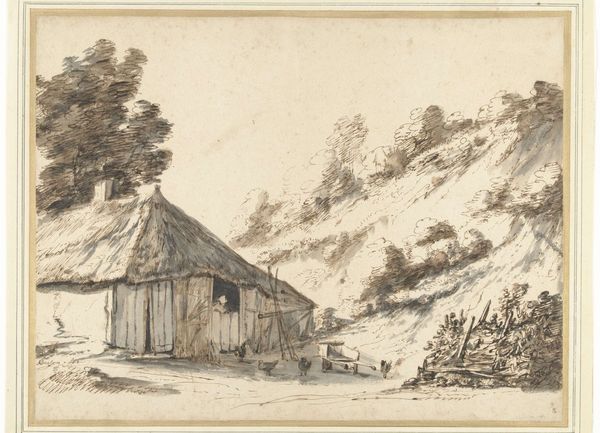
drawing, pencil
#
tree
#
drawing
#
pen sketch
#
landscape
#
ink drawing experimentation
#
pencil
#
realism
Copyright: Rijks Museum: Open Domain
Editor: This is "Hut met een rieten dak bij Sneppenschrik," a drawing made with pencil and pen by Johannes Tavenraat between 1864 and 1867. It's a pretty simple sketch, very grey and subdued. What structural elements stand out to you in this work? Curator: Primarily, the use of line and the distribution of tonal value are significant. Notice the varying thickness of the lines; these describe the form and texture of the thatched roof, for example. Also, observe how the light seems to fall from the upper left, creating shadows that give depth to the rudimentary structures. How does this inform your interpretation of the landscape? Editor: It makes it feel very solid, like you could reach out and touch the rough wood of the hut. Does that emphasis on form lend itself to any particular movement? Curator: Certainly. Tavenraat’s commitment to representing what he sees reflects a broader interest in realism, yet here it seems secondary. Observe how the geometric construction takes precedence in informing depth of space as lines recede, creating both linear and atmospheric perspectives. It's almost a structuralist interpretation of a traditional subject. Don't you find it fascinating? Editor: Absolutely. The attention to detail, even in such a simple drawing, shows a deep consideration of form. Curator: Indeed. Consider how even the negative space—the area around the hut and the trees—contributes to the overall composition, creating balance. Editor: I never would have noticed those elements without you pointing them out! Curator: It demonstrates how seemingly straightforward art can invite multilayered readings upon close examination of composition and formal elements.
Comments
No comments
Be the first to comment and join the conversation on the ultimate creative platform.
